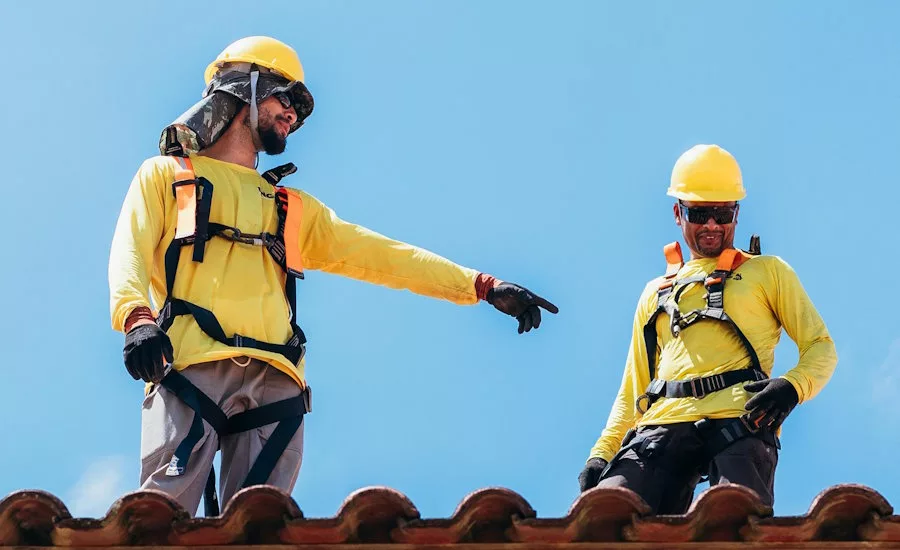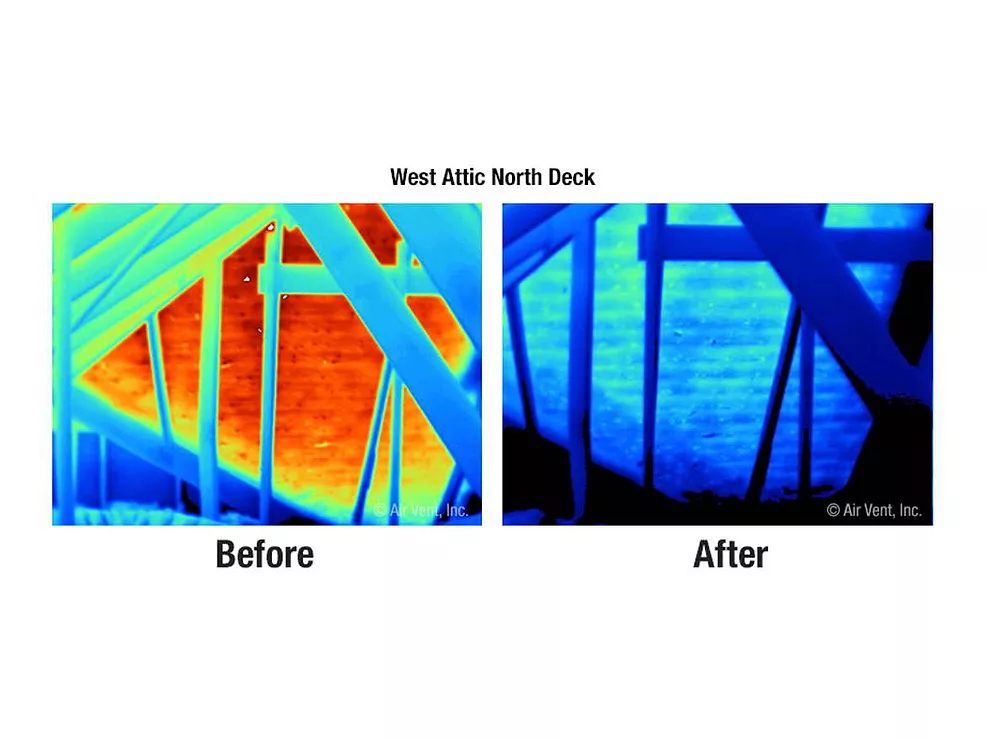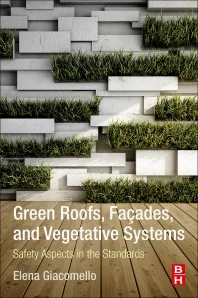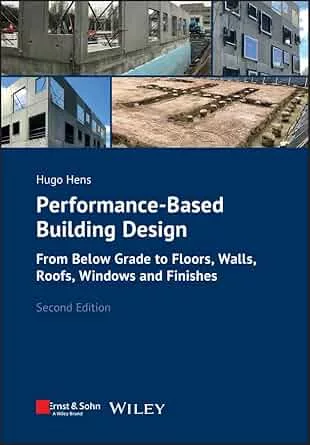Safety Advice: Eliminating Falls Through Roofs
Most state civil judiciaries legally consider roofing within the “inherently dangerous” occupation category. When you consider the steep pitches, heights to grade, surface traction conditions, material handling tasks, bulk material weights, environmental factors of wind and weather and the perpetual force of gravity on the worker’s center of mass, it is no wonder that falls from or through roofs cause more construction and demolition injuries and deaths every year than any other occupations, except steel erection.

Most state civil judiciaries legally consider roofing within the “inherently dangerous” occupation category. When you consider the steep pitches, heights to grade, surface traction conditions, material handling tasks, bulk material weights, environmental factors of wind and weather and the perpetual force of gravity on the worker’s center of mass, it is no wonder that falls from or through roofs cause more construction and demolition injuries and deaths every year than any other occupations, except steel erection.
Therefore, I believe that the complete or selective demolition of any roof should be seriously considered a “extraordinarily dangerous” task, a term I define as follows: “Any work procedure practiced in the performance of an inherently dangerous occupation, which routinely or prospectively exposes one or more workers to either potential or existing Immediately Dangerous to Life and Health (IDLH) hazards with significantly high probability and severity risk ratings.”
Employee training and a sound demolition plan are the best defenses against injury, illness and death. Before planning - and even training - can be effective, the structure must first be inspected and analyzed for potential physical hazards. Not the least of these hazards are the conditions of structural items upon which we may have to walk or work. They may have been damaged, deteriorated or otherwise compromised by adjoining defects.
When it comes to reroofing an existing deck, this would entail a reasonable inspection activity. OSHA does not necessarily consider the solitary act of removing and replacing the waterproofing materials of a roof to fall under their Demolition Standard (Subpart T). However, it is often left up to the inspecting compliance officer to determine the extent of the employer’s obligation when he or his employees detect damaged roof structures during their reroofing operation. I know of many roofing companies and general contractors who provide roof reframing/resheathing services to their clients as an extra add-on item to there contracted roofing services whenever they detect damaged structures. Once the contractor removes damaged materials below the underlayment, he has begun to venture into selective demolition, which then regulates his demolition work under Subpart T of the OSHA Construction standard. Depending on site-specific conditions, this type of work may be considered by some as an “extraordinarily dangerous” task. I am one of those people.
The general duty to provide a safe and healthy workplace and work practices remains always within the purview of the direct and controlling employers. Therefore, selective or total roof demolition tasks should be assigned only to your best trained and evaluated expert climbers, competent in fall protection strategies, skilled in material handling and rigging, equipped with and trained in the use of the best personal protection equipment available. Select a competent lead roofer or foreman who has demonstrated a genuine ability to follow plans and make intelligent decisions only when it is time for changing them. Make sure you’ve completely trained and clearly designated your demolition foreman as a competent person in your demolition plan. Remember, with the discharge of all of your responsibility onto his shoulders comes all of your authority to take prompt corrective actions whenever necessary. “Safety first” is never followed by the words “when it’s convenient and affordable.”
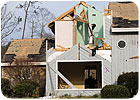
Every day a building stands, it is in the process of decay and eventual collapse. Every roof demolition project, large or small, should begin with a thorough structural inspection.
Rule No. 1: Assume nothing. After all, it’s estimated less than a quarter of existing roof jobs are due to a redesign or renovation rather than surface deterioration or structural degradation. Many low-slope industrial and commercial roofs exhibit large areas of ponding water, and these conditions may often lead to “buried” or “blind” water infiltration, rotting wood fibers or oxidizing ferrous members. As ancillary features are added over the years (such as UHF and repeater towers and roof gardens) their live-load applications to the deck and substructure may change significantly.
OSHA’s Demolition Standard (Part 1926, Subpart T) was written and adopted decades ago in order to address the employment hazards contractors may expect to find during disassembling a structure or building. In the case of most roof/floor demolition practices, many contractors must place personnel on the very structures they are in the process of removing or disassembling.
According to 1926.850(a), contractors are responsible for inspecting and analyzing the structures they are about to demolish. It reads: “Prior to permitting employees to start demolition operations, an engineering survey shall be made, by a competent person, of the structure to determine the condition of the framing, floors, and walls, and possibility of unplanned collapse of any portion of the structure. Any adjacent structure where employees may be exposed shall also be similarly checked. The employer shall have in writing that such a survey has been performed.”
It may seem, at first, to be illogical that a roofing contractor would voluntarily spend the cost of materials, labor and equipment costs to actually rebuild, shore up, cross brace or “sister” decayed or cracked rafters, or sheath over a section of rotten deck upon which he will be required to work unless required by the terms of the contract. And yet, OSHA requires the roofing employer to investigate the substructure “prior to permitting (his) employees to start demolition operations.”
The standard goes on to state in 1926.850(b): “When employees are required to work within a structure to be demolished which has been damage by fire, flood, explosion, or other cause, the walls or floor shall be shored or braced.”
According to most of the compliance officers I’ve asked, the regulatory on-site intent of this standard may assume that “within” also implies “upon” as well. The term “other cause” would certainly include water and impact damage to roofs, potentially allowing water infiltration and decay.
The structural integrity of walking/working surfaces to support those who must make access is also guaranteed under the Duty to Provide Fall Protection (1926.501(a)(2):
“The employer shall determine if the walking/working surfaces on which its employees work has the strength and structural integrity to support employees safely. Employees shall be allowed to work on those surfaces only when the surfaces have the requisite strength and structural integrity.”
OSHA defines a hole as “a gap or void 2 inches or more in its least dimension in a floor, roof or other walking/working surface.” Many roof deck holes can be observed when the attic or below-roof void may be physically accessed for inspection. Without such available access, a roof surface suspected of damage may be carefully “sounded” by dropping the flat surface of a sledge head 6 inches onto the roof area ahead to approximate the impact area and force of a footfall. Once a dead zone is sounded, I may cut and strip away the roofing and underlayment to further inspect the deck and possibly the rafters/trusses.
The Fall Protection Standard states in section 1925.501(b)(4)(I) and (ii) that each employee must be protected from falling through holes (including skylights) more than 6 feet above lower levels through the use of covers. OSHA stipulates that these covers shall be capable of resisting two times the maximum intended loads potentially applied to them. As we can deduce, if a roofer falls partially or totally through any roof surface, it would have been the employer’s obligation to have either prevented the fall from occurring, protected the employee from the effects of the fall, or else removed the employee from the exposure area until the fall hazard has been totally abated.

Most state civil judiciaries legally consider roofing within the “inherently dangerous” occupation category. When you consider the steep pitches, heights to grade, surface traction conditions, material handling tasks, bulk material weights, environmental factors of wind and weather and the perpetual force of gravity on the worker’s center of mass, it is no wonder that falls from or through roofs cause more construction and demolition injuries and deaths every year than any other occupations, except steel erection.
Therefore, I believe that the complete or selective demolition of any roof should be seriously considered a “extraordinarily dangerous” task, a term I define as follows: “Any work procedure practiced in the performance of an inherently dangerous occupation, which routinely or prospectively exposes one or more workers to either potential or existing Immediately Dangerous to Life and Health (IDLH) hazards with significantly high probability and severity risk ratings.”
Employee training and a sound demolition plan are the best defenses against injury, illness and death. Before planning - and even training - can be effective, the structure must first be inspected and analyzed for potential physical hazards. Not the least of these hazards are the conditions of structural items upon which we may have to walk or work. They may have been damaged, deteriorated or otherwise compromised by adjoining defects.
When it comes to reroofing an existing deck, this would entail a reasonable inspection activity. OSHA does not necessarily consider the solitary act of removing and replacing the waterproofing materials of a roof to fall under their Demolition Standard (Subpart T). However, it is often left up to the inspecting compliance officer to determine the extent of the employer’s obligation when he or his employees detect damaged roof structures during their reroofing operation. I know of many roofing companies and general contractors who provide roof reframing/resheathing services to their clients as an extra add-on item to there contracted roofing services whenever they detect damaged structures. Once the contractor removes damaged materials below the underlayment, he has begun to venture into selective demolition, which then regulates his demolition work under Subpart T of the OSHA Construction standard. Depending on site-specific conditions, this type of work may be considered by some as an “extraordinarily dangerous” task. I am one of those people.
Employer Commitment
Employers should logically assume the risk is critical for their tasks until they can prove otherwise with a comprehensive structural inspection. A site-specific, task-specific, worker-specific Job Safety Analysis (JSA) should be compiled before any work begins which could expose your roofers to injury. I have participated in a number of roofing accident cases where the contractor’s omission of this basic process of hazard awareness prior to his employees performing an “extraordinarily dangerous” task was reasonably considered an exhibition of willful (or even malicious) neglect.The general duty to provide a safe and healthy workplace and work practices remains always within the purview of the direct and controlling employers. Therefore, selective or total roof demolition tasks should be assigned only to your best trained and evaluated expert climbers, competent in fall protection strategies, skilled in material handling and rigging, equipped with and trained in the use of the best personal protection equipment available. Select a competent lead roofer or foreman who has demonstrated a genuine ability to follow plans and make intelligent decisions only when it is time for changing them. Make sure you’ve completely trained and clearly designated your demolition foreman as a competent person in your demolition plan. Remember, with the discharge of all of your responsibility onto his shoulders comes all of your authority to take prompt corrective actions whenever necessary. “Safety first” is never followed by the words “when it’s convenient and affordable.”

Engineering Survey
The pre-demolition JSA is the prime directive necessary to assemble a written Roof Demolition Safety Plan (RDSP) before work can begin. An integral part of the JSA is the initial engineering survey. Like the JSA, the engineering survey is also compiled, signed and dated by the employer’s designated competent person.Every day a building stands, it is in the process of decay and eventual collapse. Every roof demolition project, large or small, should begin with a thorough structural inspection.
Rule No. 1: Assume nothing. After all, it’s estimated less than a quarter of existing roof jobs are due to a redesign or renovation rather than surface deterioration or structural degradation. Many low-slope industrial and commercial roofs exhibit large areas of ponding water, and these conditions may often lead to “buried” or “blind” water infiltration, rotting wood fibers or oxidizing ferrous members. As ancillary features are added over the years (such as UHF and repeater towers and roof gardens) their live-load applications to the deck and substructure may change significantly.
OSHA’s Demolition Standard (Part 1926, Subpart T) was written and adopted decades ago in order to address the employment hazards contractors may expect to find during disassembling a structure or building. In the case of most roof/floor demolition practices, many contractors must place personnel on the very structures they are in the process of removing or disassembling.
According to 1926.850(a), contractors are responsible for inspecting and analyzing the structures they are about to demolish. It reads: “Prior to permitting employees to start demolition operations, an engineering survey shall be made, by a competent person, of the structure to determine the condition of the framing, floors, and walls, and possibility of unplanned collapse of any portion of the structure. Any adjacent structure where employees may be exposed shall also be similarly checked. The employer shall have in writing that such a survey has been performed.”
Troubleshooting
Not all roofing contractors provide roof framing/sheathing repair or replacement services to their clients. They may subcontract this portion of the work to others or require their client (the property owner or prime contractor) to correct the situation before they repair the waterproofing. The General Safety And Health Provisions section (1926.20(a)(1) OSHA mandates that “no contractor or subcontractor for any part of the contract work shall require any laborer or mechanic employed in the performance of the contract to work in surroundings or under working conditions which are unsanitary, hazardous or dangerous to his health and safety.”It may seem, at first, to be illogical that a roofing contractor would voluntarily spend the cost of materials, labor and equipment costs to actually rebuild, shore up, cross brace or “sister” decayed or cracked rafters, or sheath over a section of rotten deck upon which he will be required to work unless required by the terms of the contract. And yet, OSHA requires the roofing employer to investigate the substructure “prior to permitting (his) employees to start demolition operations.”
The standard goes on to state in 1926.850(b): “When employees are required to work within a structure to be demolished which has been damage by fire, flood, explosion, or other cause, the walls or floor shall be shored or braced.”
According to most of the compliance officers I’ve asked, the regulatory on-site intent of this standard may assume that “within” also implies “upon” as well. The term “other cause” would certainly include water and impact damage to roofs, potentially allowing water infiltration and decay.
The structural integrity of walking/working surfaces to support those who must make access is also guaranteed under the Duty to Provide Fall Protection (1926.501(a)(2):
“The employer shall determine if the walking/working surfaces on which its employees work has the strength and structural integrity to support employees safely. Employees shall be allowed to work on those surfaces only when the surfaces have the requisite strength and structural integrity.”
OSHA defines a hole as “a gap or void 2 inches or more in its least dimension in a floor, roof or other walking/working surface.” Many roof deck holes can be observed when the attic or below-roof void may be physically accessed for inspection. Without such available access, a roof surface suspected of damage may be carefully “sounded” by dropping the flat surface of a sledge head 6 inches onto the roof area ahead to approximate the impact area and force of a footfall. Once a dead zone is sounded, I may cut and strip away the roofing and underlayment to further inspect the deck and possibly the rafters/trusses.
The Fall Protection Standard states in section 1925.501(b)(4)(I) and (ii) that each employee must be protected from falling through holes (including skylights) more than 6 feet above lower levels through the use of covers. OSHA stipulates that these covers shall be capable of resisting two times the maximum intended loads potentially applied to them. As we can deduce, if a roofer falls partially or totally through any roof surface, it would have been the employer’s obligation to have either prevented the fall from occurring, protected the employee from the effects of the fall, or else removed the employee from the exposure area until the fall hazard has been totally abated.
Looking for a reprint of this article?
From high-res PDFs to custom plaques, order your copy today!
